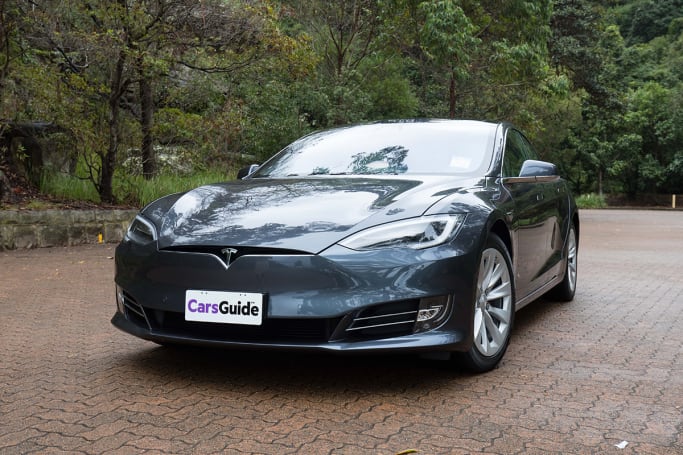The history of electric cars
With most major manufacturers pledging to phase out or significantly reduce the production of internal-combustion-engine (ICE) vehicles in the coming years in favour of electric ones, it seems like EVs are the car of the future – although it’s not the first time all-electric cars have been touted as such.
If you’re wondering “When was the first electric car invented?”, or “Who invented the electric car?”, the answer is tricky – it’s hard to attribute it all to one single electric car inventor, since many people’s innovations combined to create what we know as the modern EV.
Back in 1828, when having two completely diverse jobs at the same time was apparently no big deal, Hungarian priest and physicist Ányos Jedlik invented an electric motor that powered a model car, creating the first ever EV for tiny people (the first electric motor, incredibly, dates back to the 1740s).
Normal-sized people could be ferried about on an electric carriage designed by Scottish inventor Robert Anderson somewhere between 1832 and 1839, and in 1835, Professor Sibrandus Stratingh from the Netherlands came up with a small electric car.
The history of early electric cars had a few new chapters added when a trio of excellently named French men arrived to push things along: French physicist Gaston Planté developed a rechargeable lead-acid battery in 1859; scientist Camille Alphonse Faure improved on the design in 1881; and inventor Gustave Trouvé tested the first human-carrying EV with its own power source the very same year in Paris.
Electric car history was made when an English inventor (clearly a very popular job at the time) named Thomas Parker built the first production EV in 1884, although German engineer Andreas Flocken is credited with building the first “real” electric car (“real” as in it more closely resembled a car as we know it, rather than a horse-drawn carriage), the Flocken Elektrowagen, in 1888.


Download the EVGuide Report, 2022
Australia’s one-stop snapshot of all things relating to electric cars.
Download for free
These early EVs would reach paltry speeds of around 15km/h, although the speed soon picked up: a fancy-named man with a fancy-named car (Camille Jenatzy and his rocket-shaped EV La Jamais Contente) reached a top speed of 105.88 km/h in 1899 (around the same time, the first hybrid car was developed by Ferdinand Porsche, yes, that Porsche, and Jacob Lohner).
The late-1800s and early-1900s were seen as a ‘golden age’ for electric cars: London had a fleet of battery-powered EVs by 1897; across the pond in the US, 38 per cent of all cars where electric-powered (compared to 20 per cent for petrol-powered).
That right there is a staggering moment in history when you think about it – things really could have gone in a different direction, as could our CO2 emissions from transport.
The popularity of EVs had waned by the 1920s thanks to improved road infrastructure (allowing for cars to go longer distances in shorter time periods), the emergence of affordable petrol to power ICE vehicles that could go further and faster than EVs, and the simple fact that petrol-powered cars were cheaper (a problem that modern EVs are still grappling with).
It was decades before EVs came back on the scene in any meaningful way, starting with 1959’s Henney Kilowatt, an all-electric car from the US that’s considered to be the world’s first mass-produced electric car, even though only a hundred were made (the UK’s two-seater Enfield 8000 EV slightly beat this number when 112 were produced in 1973).
EVs have the unique distinction of being the first manned vehicle type in space, with the Lunar Roving Vehicle EV making tracks on the moon’s surface during 1971’s Apollo 15 mission.
A number of EVs were produced in the US between the 1960s and 1990s, such as the Electrosport, Mars II and the Electrica, but low driving range and a high price resulted in no significant impact in the marketplace and very few were built, or sold.
Advances in metal-oxide-semiconductor (MOS) technology and lithium-ion batteries, both of which had been in development for decades, led to the emergence of modern high-power, high-range EVs in the early-2000s.
Tesla Motors in the US began developing the Tesla Roadster in 2004 and its epoch-shifting arrival in 2008 made it the first road-legal series production all-electric car to use lithium-ion battery cells, and the first production all-electric car to travel more than 320 km per charge (limited numbers of the Roaster were even available in Australia).

 Tesla Motors developing the Roadster in 2004 and its arrival in 2008 made it the first road-legal series production all-electric car to use lithium-ion battery cells.
Tesla Motors developing the Roadster in 2004 and its arrival in 2008 made it the first road-legal series production all-electric car to use lithium-ion battery cells.
The Roadster’s arrival effectively ushered in a new era in which the world’s largest car manufacturers began to realise – or were forced to realise by an upstart called Elon Musk – the potential for EV technology, and the clear consumer demand for EVs.
Drivers in Japan were given access to the all-electric Mitsubishi i-MiEV in 2010, and it was also available to lease for Australian customers that same year.
The next EV to make waves in the global marketplace was the Nissan Leaf, the first modern all-electric, zero-tailpipe emission family hatchback to be produced for the mass market from a major manufacturer, which arrived in Australia in 2013. It would go on to be the world’s biggest-selling EV, for a time.

 The Nissan Leaf arrived in Australia in 2013.
The Nissan Leaf arrived in Australia in 2013.
Tesla’s popular Model S sedan was released in the US in 2012, and a slew of EVs from other manufacturers keen to get a slice of the pie arrived in 2013: the Toyota RAV4 EV, the very cute Renault Zoe and the stylish and cool BMW i3.

 The Tesla Model S remains the poster child for electric vehicles.
The Tesla Model S remains the poster child for electric vehicles.
Tesla continued its dominance of the market with 2016’s Tesla Model 3, the first EV to sell over a million units globally (as of June 2021), making it the world’s best-selling premium sedan, beating out competition from the BMW 3 Series and Mercedes-Benz E-Class, and taking the Leaf’s mantle as the world’s highest-selling EV ever.

 The Renault Zoe arrived in 2013.
The Renault Zoe arrived in 2013.
Other important factors that have contributed to the rise in popularity of EVs are significant improvements to EV infrastructure throughout the world, and tax incentives and other subsidies in countries like the UK and Norway to encourage uptake (Norway has the most EVs of any country per capita, and 60 per cent of all new cars sold there are electric).
A total of 3.2 million EVs were sold globally in 2020, and with the phasing out of ICE vehicles over the next couple of decades, it has been predicted that all new cars sales will be EVs by the time 2040 rolls around. (Don’t bet on that happening in Australia, however, where EVs still make up less than one per cent of all new cars sold.)

 The Tesla Model 3 was the first EV to sell over a million units globally.
The Tesla Model 3 was the first EV to sell over a million units globally.
Until then, expect EV prices to slowly drop, driving ranges to increase and the presence of EVs on Australian roads to steadily increase – especially if the federal government finally follows other countries and introduces tax cuts to encourage drivers to go all-electric.















![Toni Kroos là ai? [ sự thật về tiểu sử đầy đủ Toni Kroos ]](https://evbn.org/wp-content/uploads/New-Project-6635-1671934592.jpg)


